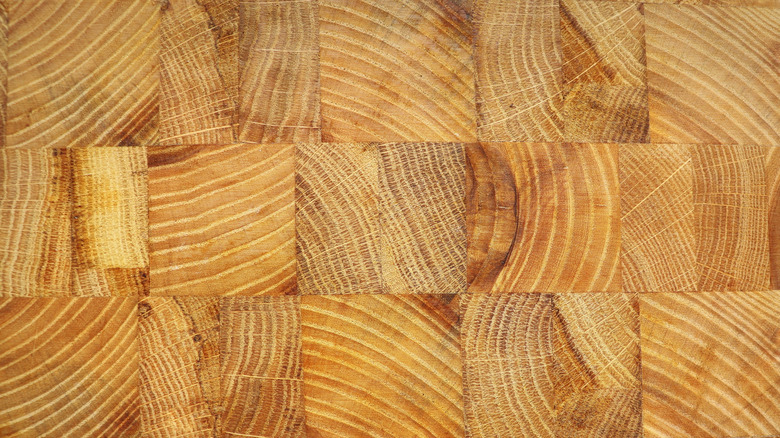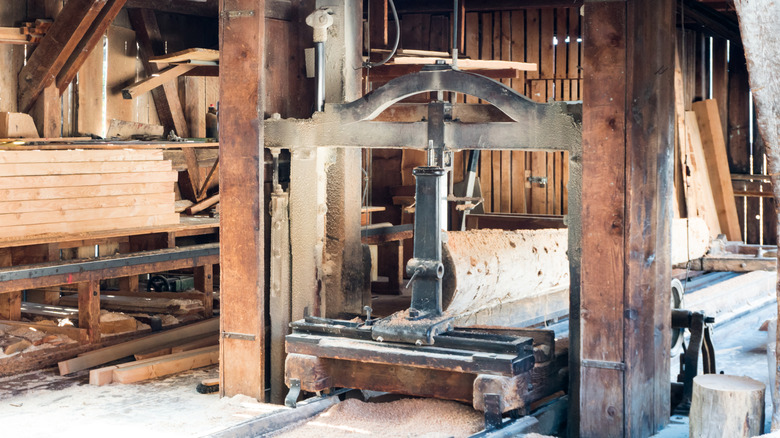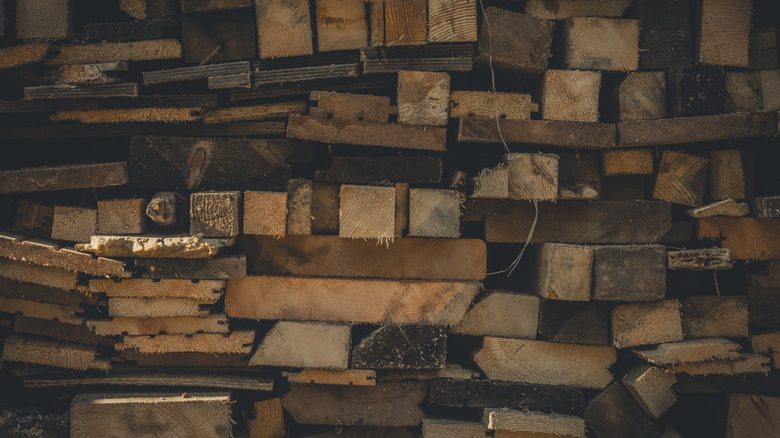What Type Of End Grain Is Best For Woodworking Projects And Why Does It Matter?
Woodworking isn't just about knowing how to use tools or master joinery techniques. A big part of it comes down to learning about different kinds of wood and the strengths and weaknesses of that wood's various surfaces. When examining a typical saw-milled board, there are usually three surfaces to consider: Face grain, edge grain, and end grain.
Think of the wood grain like a bundle of straight straws packed together in parallel. The face and edge grain are the angles where you can see the sides of the straws, taking up most of the surface area and offering the most usable space on a standard board. Meanwhile, the part of the bundle where you can see the tips of the straws represents the end grain. This part of the wood is extremely useful for butcher blocks and cutting boards that you wish to "self-heal" after you've used a knife on them, but it's also often used in the construction of wooden mallets for its shock absorption properties and in decorative pieces that wish to take advantage of its distinctive appearance. It's useful in smaller, beginner-friendly woodworking projects and more advanced creations alike.
But it goes even further. There are differences in quality to be found even among the different patterns of end grain on the same species of wood. There are three kinds of end grain that you can get depending on the way the wood was processed before it makes its way to your local lumber dealer: plain sawn, rift sawn, and quarter sawn. Those who are interested in doing a few end-grain projects might be interested in learning a bit more about the differences between these three end-grain types and why rift-sawn grain is the best option for your woodworking project.
What is the difference between plain sawn, quarter sawn, and rift sawn end grain?
After a tree is felled, delimbed, and sent to a lumber mill, there are a few different ways that the miller can cut it. Plain sawn, or flat sawn lumber, is the most common. It involves cutting the entire log in a single, parallel direction–kind of like how a deli slicer cuts a slab of meat. This allows the miller to produce the widest possible boards from the center that span the entire width of the log. It also utilizes as much of the wood as possible, producing the least amount of waste. This is what you'll most likely find on the shelves in most big box stores and even in most local hardware centers. It's also the cheapest, which makes it attractive for those on a budget.
Quarter sawn lumber is sort of an in-between cut. It's made by first sawing a log into four separate quarters, before then slicing evenly into flat boards. It's a bit more expensive and produces a bit more waste. It can also be hard to find unless you have access to a lumber mill that does custom cuts, or you have access to a tool like the Harbor Freight Saw Mill that allows you to cut your own.
Finally, there are rift sawn boards. These are also made by first quartering the log, but they are then cut in a spiral pattern rather than being flat sawn. This makes it so that every single board that is produced is cut toward the center of the tree. It is the most expensive and labor-intensive method, and it also produces the most waste. That said, there are a few reasons why it's the best option for fine woodworking.
Rift sawn end grain is best quality for woodworking projects, if you can afford it
The best type of end grain for your individual needs is going to depend on a number of different factors, including the kind of project you're using it for, the availability of local lumber, and most importantly, your budget.
Plain sawn lumber is the cheapest and most readily available. This makes it an attractive option for many carpenters since most end grain projects are made using hardwood, which is already quite expensive. The downside to plain sawn lumber is that it's more prone to cupping and warping. The inconsistent grain pattern of the rings means that shrinkage and expansion don't occur in a way that is consistent with maintaining a straight board. This might not be an issue in lumber that is properly dried and stored, but it can cause problems if exposed to excessive temperatures or moisture. Quarter sawn is a compromise cut. It's more structurally sound than plain sawn, but there is still a slight curvature to the grain on all but the center boards of each quarter of the log.
Because all rift sawn boards are cut toward the center of the tree, none of the rings are cut at an angle. This minimizes the effects that shrinkage and expansion have on the straightness and squareness of the board itself. Additionally, the pattern of the grain on rift sawn wood has the most consistent pattern. This can add some aesthetic value to the piece in addition to its structural qualities. That said, many may find it to be prohibitively expensive, since you're not just paying for the wood and the intensive labor of cutting it, but you're also paying for the value of the wood that was wasted in achieving the cut.


